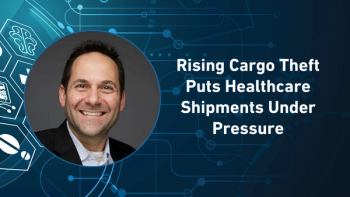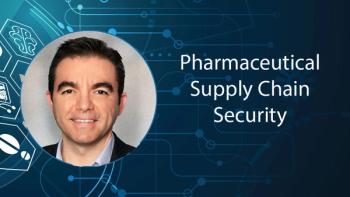Key Takeaways
- High-profile counterfeit medicine cases—from the 2019 Kentucky SURGICEL incident to counterfeit HIV drugs and Ozempic—expose vulnerabilities in the US healthcare supply chain, especially via unauthorized “gray market” channels.
- Criminal networks exploit forged documentation, fake packaging, and corrupt distributors to infiltrate regulated supply chains with dangerous products.
- Despite strict regulations such as the DSCSA, supply chain security ultimately depends on constant vigilance and strict procurement from authorized sellers.
What has become a landmark case in the annals of anticounterfeiting in the life sciences industry—one a judge described as “horrific”—began in 2019 with a neurosurgeon in an operating room at the University of Kentucky. The surgeon noticed that a medical device he had used many times before didn’t quite feel right. He was about to implant that device, an absorbable hemostat meant to control bleeding, into a patient’s body. But he stopped, because the device didn’t have the same tactile feel or texture that he was accustomed to. He rejected the device, which then led to a quality complaint to the manufacturer.
The chain of events that followed this initial “complaint” in Kentucky spanned approximately three years, involved extensive international investigations, numerous legal proceedings, and ultimately led to multi-million dollar judgments against multiple parties, as well as jail time for at least one individual involved in the major counterfeiting ring that was exposed.1
Of course, this case raised many, many questions. Still, the big question was, “How did that non-sterile, potentially deadly, counterfeit product get there, in the hands of a surgeon in an operating room within the regulated US healthcare supply chain?” Unfortunately, we know that bad actors motivated by profit and with no regard for the personal harm and general havoc they wreak will find a way to break in. “Locks are for honest people,” as the saying goes.
In our increasingly complex healthcare supply chains, there will always be weak links that bad actors will target and attempt to exploit to their advantage. While we don’t have space here to address all the potential weak points, I’d like to focus on what is clearly the most exploited pathway we see and the one that factored into the University of Kentucky case, as well as many others. That is the risk of acquiring medicines and healthcare products from the secondary or gray market, particularly through unauthorized sellers and channels.2 The following cases underscore the importance of diligence and vigilance in our procurement processes.
The Kentucky case involved a product called SURGICEL, manufactured by Johnson & Johnson’s Ethicon division. The investigation revealed that the hospital had acquired the product from an unauthorized gray market distributor in Florida, via a supply chain linked to illicit traders in Dubai and Delhi. The original source of the counterfeits in Delhi, who sold at least 4,000 units, was producing the products by hand in his non-sterile apartment using run-of-the-mill surgical gauze and fake packaging. As is typical in such cases, the buyers were deceived by counterfeit pedigree documents and false assurances from the sellers.
Undoubtedly, the most significant recent case involving counterfeit drugs infiltrating the legitimate US supply chain was the 2021–2023 Gilead HIV medications case. This case was shocking for its scale and reach, as well as for the highly organized, multi-layered criminal network behind it. Before being exposed, the perpetrators managed to distribute to pharmacies an estimated 85,000 bottles of Biktarvy and Descovy valued at around $250 million. Gilead’s lawyers named more than 70 defendants in the case, including licensed but corrupt distributors, pharmacies, and individuals who were complicit in the criminal enterprise. This case also involved extensive use of forged documentation, including fake T3/pedigree documents.3
Thus far in 2025, the case making news has involved counterfeit Ozempic, which has become a target of illicit traders since its market launch. In April, Novo Nordisk notified the FDA of several hundred units of counterfeit Ozempic that had been identified in the US supply chain. According to the FDA alert, these products were distributed outside of the Novo Nordisk authorized supply chain. The fake packaging carried authentic lot numbers along with fraudulent serial numbers. This case is still under investigation, so details are limited, but it shares the same issues related to sourcing medications on the gray market from unauthorized sellers.4
These cases highlight risk in the US pharma supply chain, which is one of the world’s most tightly controlled. However, the issue of counterfeit medicines infiltrating our legitimate, regulated supply chains is global and, in all likelihood, growing, considering the overall increase in the manufacture and distribution of counterfeit drugs. While regulatory systems like the US Drug Supply Chain Security Act aim to close many of these gaps, the system is only as strong as its weakest link. Despite all the regulatory progress made, these cases serve as a stark reminder: vigilance at every node of the supply chain is not optional—it is the last line of defense.
About the Author
Sean O’Hearen is Founder and Principal Consultant at 1st Line Partners.
References
1. Davis R. J&J Should Get $18M For 'Horrific' Counterfeits, Judge Says. Law360. August 2, 2022. https://pbwt2.gjassets.com/content/uploads/2022/06/JJ-Should-Get-18M-For-Horrific-Counterfeits-Judge-Says.pdf
2. Disclaimer: This article highlights risks associated with vulnerabilities in the secondary pharmaceutical market that may be exploited by bad actors. It is not intended as a blanket indictment of all participants in the secondary market. Many secondary distributors operate responsibly and play a legitimate role in addressing supply gaps and improving access. However, as with any complex supply chain, proper due diligence and regulatory compliance are critical to maintaining product integrity and patient safety.
3. Gilead v. SafeChain Complaint. September 28, 2022. https://www.safemedicines.org/wp-content/uploads/2019/09/Gilead-v-SafeChain-et-al-Fourth-Amended-Complaint.pdf?utm_source=chatgpt.com
4. FDA Warns Consumers Not to Use Counterfeit Ozempic (Semaglutide) Found in US Drug Supply Chain. FDA. April 14, 2025. https://www.fda.gov/drugs/drug-safety-and-availability/fda-warns-consumers-not-use-counterfeit-ozempic-semaglutide-found-us-drug-supply-chain?utm_medium=email&utm_source=govdelivery




